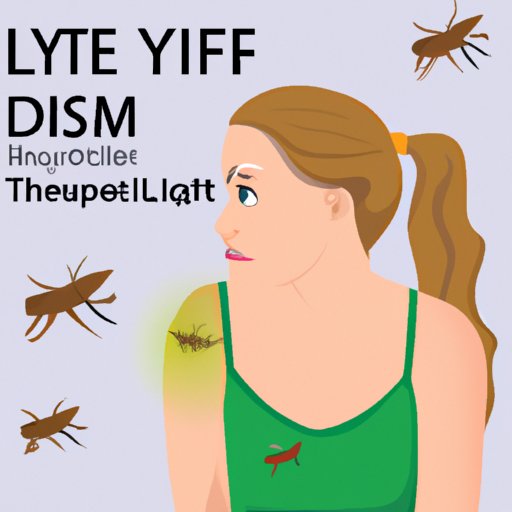
Introduction
Lyme Disease is a bacterial infection caused by the bite of a tick infected by Borrelia burgdorferi. It is a serious condition that can lead to severe complications if not treated early. Lyme disease rash is one of the primary symptoms of the condition, and its identification is an essential step in the detection and treatment of Lyme Disease. In this article, we’ll talk about what Lyme disease rash looks like and how to recognize its signs.
Identifying Lyme Disease: Recognizing the Signs of the Lyme Disease Rash
The Lyme Disease Rash is one of the most common symptoms of Lyme Disease and is usually the first visible sign of the infection. It’s important to recognize the signs of the rash to identify the disease in its early stages and avoid further complications.
What to Look for: Describing the Appearance of the Lyme Disease Rash
The Lyme Disease Rash usually appears in the early stages of an infection, usually between 3-30 days after the tick bite. The rash is generally round or oval-shaped and can range in size between 3-10cm (1-4 inches). The rash is also flat or slightly raised, and often itchy or painful.
The Visible Symptom: A Guide to Identifying the Classic Lyme Disease Rash
The classic Lyme Disease Rash, also known as an Erythema migrans rash, generally begins as a small red bump resembling a mosquito bite and grows bigger over time. The center of the rash may clear, creating a bullseye appearance with a red ring around a clear center. The rash can be itchy and warm to the touch and can occur in any part of the body, though typically found on the legs, arms, and torso.
Don’t Miss the Warning Signs: Learning How to Spot Lyme Disease Rash
The Lyme Disease Rash can vary in appearance from person to person, and some people may not even develop a rash until later stages of the infection. Other symptoms to look for include flu-like symptoms such as a headache, fever, fatigue, and muscle aches. A person with Lyme Disease may also experience joint pain, eye inflammation, and cardiac symptoms.
A Close-up Look: A Comprehensive Analysis of the Lyme Disease Rash
The Lyme Disease Rash can cause a variety of patterns and sizes, making it difficult to diagnose. Rashes can appear differently depending on the individual, with some being dark purple, others being bright red, and some being quite faint in coloration. Larger rashes can also develop clusters. In some cases, the rash may spread outside of the primary site, making it more challenging to identify.
Visualizing Lyme Disease: A Photo Guide to Identifying the Lyme Disease Rash
Accurately identifying Lyme Disease Rash by examining photos is crucial in the early detection and treatment of the disease. Photos can help distinguish Lyme Disease Rash from other skin conditions, such as hives, eczema, or other insect bites. Look for red, flat or slightly raised bumps that tend to grow in size and spread. Check the center of the rash for signs of clearing, and be sure to track how quickly the rash is spreading.
The Importance of Early Detection: Understanding the Symptoms and Appearance of Lyme Disease Rash
Early detection is critical in the treatment of Lyme Disease. While most people with the infection will develop a rash, it’s not always the first or only symptom. If Lyme Disease is left untreated, it can lead to severe complications such as meningitis, arthritis, and nerve damage. Learning the signs and symptoms of Lyme Disease, including the appearance of Lyme Disease Rash, can be essential in prevention.
Conclusion
The early detection and treatment of Lyme Disease can prevent serious complications, including chronic Lyme Disease. Early identification of symptoms, including the Lyme Disease Rash, can be critical to successful treatment. While Lyme Disease Rash can vary in appearance, understanding the basics and identifying the rash in its primary stages is essential. If you or someone you know suspects they may have Lyme Disease, do not hesitate to contact a healthcare professional for immediate testing and treatment.
Additional resources: Centers for Disease Control and Prevention (CDC), Lyme Disease Association, International Lyme and Associated Diseases Society (ILADS).





